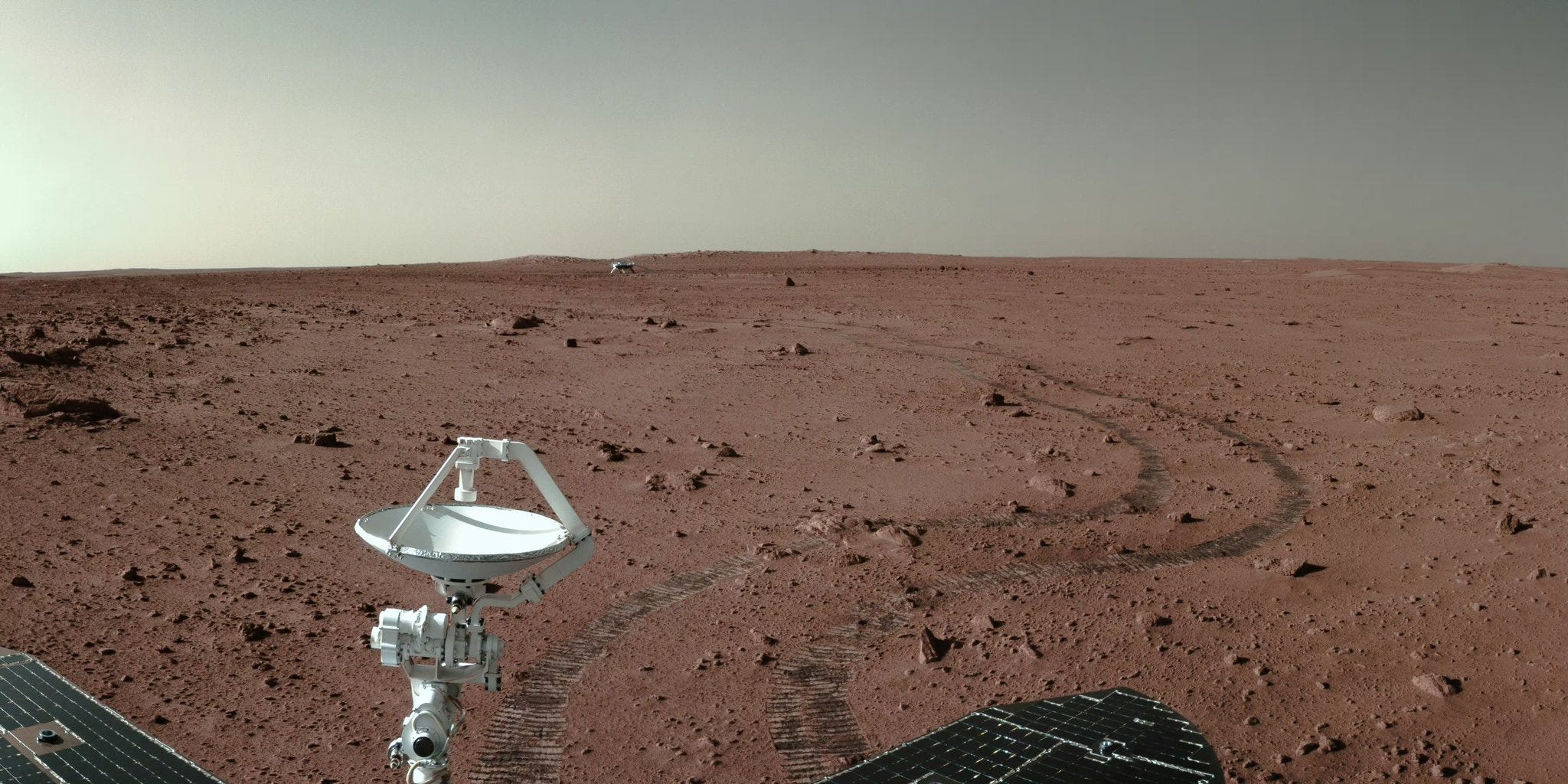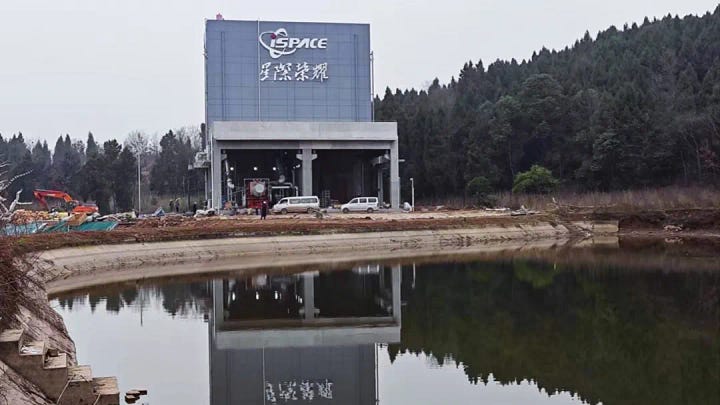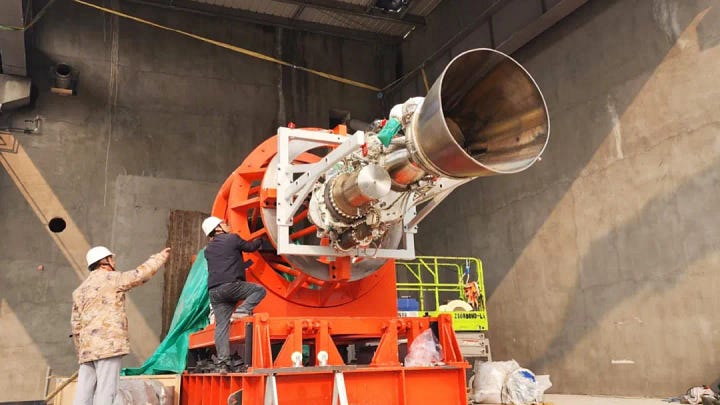China Seeks International Tianwen-3 Experiments, Reusable Rockets Prepare for Major Year
China's space sector is expanding its resources, capabilities, and portfolio following the Two Sessions.

This year’s annual Two Sessions in Beijing has only recently ended but China’s space sector is already gaining new funding, completing new tests for reusable launch vehicles, and seeking partners abroad.
CNSA seeking international partners on Tianwen-3
The China National Space Administration announced on March 11th that it has opened up its Tianwen-3 Mars sample return mission for international experiments that will fly along with the main missions. In the seven-page document, the space agency outlines the timeline, requirements, and orbital regimes for experiments.
To begin with, any international organization that would like to be onboard Tianwen-3 needs to submit a letter of intent by June. After that preliminary selections will take place in July and August before submissions of selected proposals are needed by the end of September. In October 2025, the China National Space Administration will make its final selection on international payloads.
Any payload selected must use less than forty watts of power while withstanding lows of negative fifty degrees and highs of seventy degrees Celsius. If an experiment is on the orbiter-return module, it will need to be designed to operate for around three years and weigh under fifteen kilograms while the spacecraft resides in a 350 kilometer 30-degree inclination orbit of Mars. If an experiment is onboard the lander-ascent module’s service module, it will need to weigh around five kilograms and be designed to survive five years, as the spacecraft resides in a 400 by 76,000 kilometer 54-degree inclination orbit of Mars.
When international payloads and experiments are confirmed, the China National Space Administration will require them to be delivered in 2027 for preparation ahead of a 2028 launch, and return to Earth around 2030/31.
Deep Blue conducts test of Thunder-RV engine
On March 11th, Deep Blue Aerospace announced that back on February 22nd it had conducted a successful test of its Thunder-RV engine. This engine is a vacuum optimized version of the company’s Thunder-R engine, which burns rocket-grade kerosene and liquid oxygen to generate 22 tons of thrust at sea level or 27 tons in vacuum.
For the test, the Thunder-RV engine burned the two liquid propellants for 340 seconds (five minutes and forty seconds), for which 285 seconds were spent setting the engine to various throttle levels. The test also verified the ignition and shutdown process, clearing another milestone ahead of Nebula-1’s debut mission in the coming months, around the middle of the year.
Deep Blue stated that the Thunder-RV engine has now completed two separate testing rounds. The first was in December 2024, where the engine completed multiple ignition and gimballing tests, and the second was on February 22nd. February’s test also saw the addition of a nozzle extension to simulate the engine’s thermal conditions when flying into orbit.
iSpace completes D series funding round
iSpace announced on March 11th that it had completed the first part of its D series funding round, providing the company with hundreds of millions of Yuan in new funding. An exact figure was not shared by the company, but it was shared that Sichuan Tianfu Xinyun Digital Economy Development Fund Co. Ltd. (四川省天府芯云数字经济发展基金有限公司), who are managed by Sichuan Development (Holding) Co. Ltd. (四川发展控股有限责任公司), led this round. According to iSpace, these new funds will be used for the research and development of the Hyperbola-3 launch vehicle, to expand engine test capacity, and for increased engine production.
Facilities for the launch vehicles testing and manufacturing will be in Deyang (德阳市), Mianyang (绵阳市), and Chengdu (成都市) to strengthen Sichuan Province’s (四川) commercial space industry ecosystem. These facilities include a 25,000 square meter production site set to enter operation in April, which will expand to 35,000 squre meters in early 2026, an engine production facility capable of delivering twenty-five engines per year, followed by an increase to one hundred next year, and an engine test site that will perform over one hundred tests per year. The engine test facility is set to occupy eighty acres of land, with test stands capable of withstanding up to two hundred tons of thrust.


With the new funding, the company also shared that Hyperbola-3 is targeting December for its first flight and booster landing on a drone ship, followed by a possible reflight of a booster in June 2026. iSpace also mentioned that three Hyperbola-3 launch vehicles are currently in various stages of production.
In the vehicle’s current iteration, Hyperbola-3 is expected to carry 14,000 kilograms to low Earth orbit when expended or 8,600 kilograms when reused. Nine JD-2 engines are set to power the first-stage with a single vacuum JD-2 powering the second-stage, these engines will burn liquid methane and liquid oxygen.
Space experts attend the Two Sessions
China’s annual Two Sessions (两会) recently wrapped up in Beijing. This annual meeting saw thousands of government officials from the Chinese People’s Political Consultative Conference (中国人民政治协商会议) and National People’s Congress (中华人民共和国全国人民代表大会) meet to deliberate on and develop key policies for the coming year. A few of the officials attending the meeting are from China’s space sector, and spent some time talking to national media.
One such official is Liu Zheng (刘争), from the Long March launch vehicle manufacturer Capital Aerospace Machinery Co. Ltd. (首都航天机械有限公司), who was at the meeting serving as a member of the Chinese People’s Political Consultative Conference. According to Capital Aerospace Machinery, Liu performed various political duties such as deliberating with other officials from all walks of life where he made suggestions on policy.
Specifically regarding space, the company says Liu engaged in discussions with experts from the fields of artificial intelligence and intelligent manufacturing on how those industries could improve the space industry. Speaking to national media, Liu stated that manufacturing is being increasingly automated, requiring workers to develop increasingly complex technical skills. At the Two Sessions, Liu says he recommended policy to better train students and current professionals who wish to work in an increasingly high-tech manufacturing sector. Referring to this year’s government work report, Liu expects that greater financial resources for innovative enterprises will improve people’s livelihoods as manufacturers of space hardware can expand their workforce and operations.
Additionally, Yang Liwei (杨利伟), China’s first taikonaut, a member of the national committee of the Chinese People’s Political Consultative Conference, and Deputy Chief Designer of the China Manned Space Agency, also attended this year's two sessions. On the sidelines of the meeting, he spoke to People’s Daily (人民日报) about some small updates regarding China’s crewed lunar missions.
To begin, he mentioned that all hardware and technology needed for the missions are actively under development and being prototyped, including Mengzhou (梦舟) crew capsule, Lanyue (揽月) lunar lander, Wangyu (望宇) spacesuit, and Tansuo (探索) rover, while a launch pad at the Wenchang Space Launch Site is being built for the Long March 10 Moon rocket. These details were already known prior to Yang stating them, but he added that uncrewed and crewed test flights of spacecraft will carry a handful of science experiments, with plans for these test flights being finalized.
Regarding crews for these missions, Yang Liwei stated that prime and backup crews will be selected from China’s existing taikonaut pool. It is worth noting that any taikonaut that has flown to the Tiangong Space Station is more likely to be selected for initial missions.
Of course, 2025 is set to be a critical year for China’s privately-owned commercial space sector as various reusable rockets debut and possibly recover their first-stage boosters. Alongside this, potential billions of Yuan could flow into the sector as China’s government seeks more innovation-driven development and growth.


